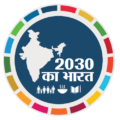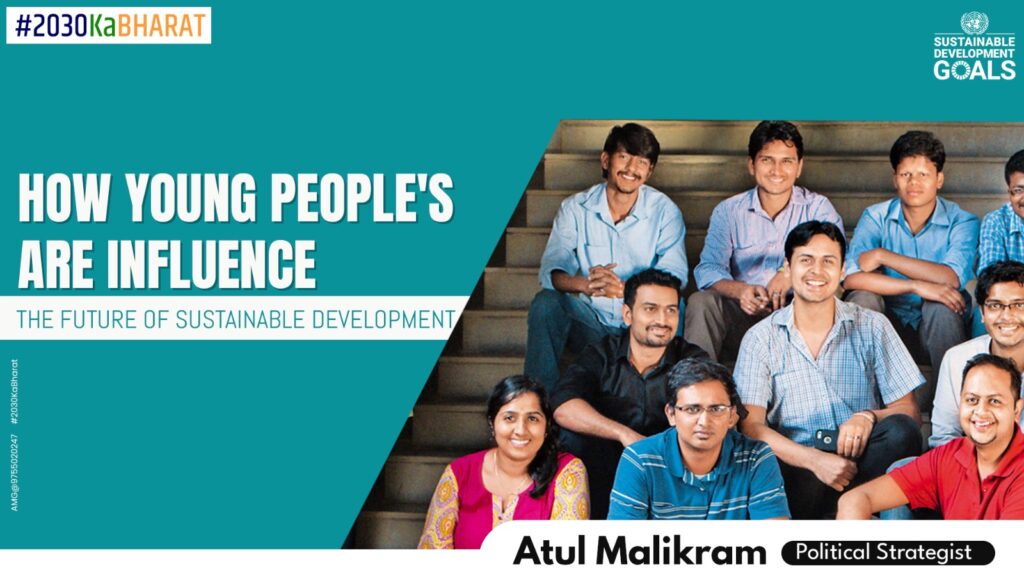Youth are a major force for sustainable development Goals and key agents for social change, economic growth and technological innovation. From calling for urgent climate action to tackling inequalities and gender biases, young people are driving the Decade of Action for the Sustainable Development Goals (SDGs) forward.
“Ask not what your country can do for you — rather ask yourself what you can do for your country.” – JOHN F KENNEDY
The Youth Powerhouse of India
India, the world’s youngest nation, is on the cusp of a transformative journey. With 65% of its population under 35 years old, India boasts a vibrant and determined youth who are ready to shape their own future. Prime Minister Shri Narendra Modi aptly captured this spirit when he said, “that nation now does not need to look back.” Today, India’s youth are at the forefront of global innovation, contributing approximately 43% of the world’s population. Their willpower, creativity, courage, and determination make them a potent force capable of addressing global challenges and building a more equitable, just, and peaceful world.
Youth: Advocates for Sustainable Development
Empowered youth from diverse backgrounds are key advocates for sustainable development across various sectors, from food and fashion to finance. They serve as torchbearers for values, awareness, action, and advocacy. Their impact extends to managing public interests, shaping policies, sparking community revolutions, and inspiring transformative change.
“As the young leaders of tomorrow, you have the passion, energy, and commitment to make a difference. What I’d like to really urge you to do is to have a global vision. Go beyond your country; go beyond your national boundaries.” – Ban Ki-Moon, UN Secretary-General
Understanding Sustainable Development
Sustainable development is a universal principle championed by the United Nations. It aims to meet the present needs without compromising the ability of future generations to meet their own needs. This concept, initially defined by the 1987 Brundtland Commission report, encompasses a holistic agenda balancing social, economic, cultural, and environmental objectives. The United Nations has outlined 17 goals and 169 interconnected targets within the framework of sustainable development, providing a clear, practical, and unified strategy for 2030. This strategy addresses crucial issues such as gender equality, education, health, basic infrastructure, and sustainable technologies to combat climate change and promote environmental sustainability.
Youth and Global Challenges
India’s youth are acutely aware of the world’s challenges, including gender inequality, poverty, illiteracy, terrorism, unemployment, and health crises. Every day, approximately 3,000 young people become infected with HIV and other diseases. Young women continue to face violence and discrimination. Environmental issues, solid waste management, deforestation, global warming, and political instability are additional challenges. Addressing these issues requires the active participation of India’s youth, empowering them to make informed decisions and take action.
Youth as Changemakers
India, home to 1.3 billion people, with nearly 1 billion under the age of 35, is fueled by the ideology of Mahatma Gandhi: “Be the change you want to see in the world.” The nation’s youth embody this ethos, actively working as critical thinkers who use their energy, voices, and actions to drive change. They have the ability to identify existing challenges, navigate obstacles to change, and serve as effective communicators at the grassroots level. Encouraged to vote and advocate for sustainable solutions, youth play a pivotal role in shaping policy changes and advocating for a brighter future.
The Vision of a “Green Prosperous India”
India’s vision of a “Green Prosperous India” hinges on its empowered youth, who prioritize “education for sustainability, not stability.” Initiatives such as the Swachh Bharat Abhiyan, tree plantation drives, and platforms like MyGov aim to reduce consumption and wastage. These endeavors are designed to make a positive impact by fostering environmental consciousness and sustainability.
Engaging Through Technology and Communication
In today’s interconnected world, technology and communication play a pivotal role in mobilizing youth for sustainable development. Initiatives like the Digital India campaign, portals like MyGov.in, and platforms such as “Chai Pe Charcha” have bridged the gap between the government and citizens by electronically disseminating government services and educating the younger generation. The youth bring vitality and optimism, and they have the power to use technology as a responsible platform to share knowledge and address crises.
Empowering India’s Youth
While the energy of India’s youth is undeniable, it’s essential to channel it in a constructive direction. To achieve the Sustainable Development Goals (SDGs) in India, we need a strong policy that emphasizes inclusivity, participation, gender responsiveness, a comprehensive approach, and knowledge-based strategies. These strategies should focus on primary priorities like education, health, and employment, ultimately striving for a world where girls can grow with dignity and respect, and where poverty is no longer acceptable.
India’s youth hold the key to realizing the Sustainable Development Goals by 2030. Their energy, determination, and unwavering commitment to positive change make them the driving force behind India’s journey towards a more sustainable and equitable future. It’s imperative that we empower and support this dynamic generation as they work tirelessly to shape a better India and a better world.
A Modern Youthful India!!!
United India is where-
Poverty and Illiteracy are history,
Education becomes the priority
Agriculture and Health work in symphony,
Women and Children live in harmony,
Wildlife, Heritage, and Technology live with integrity

